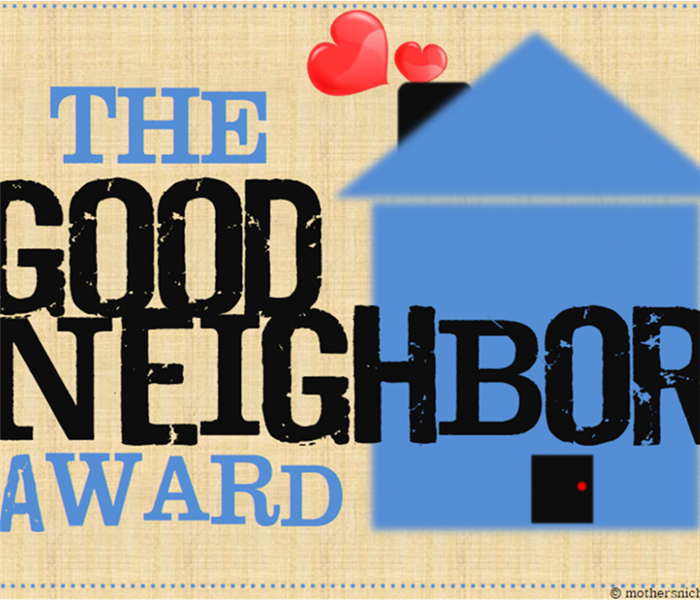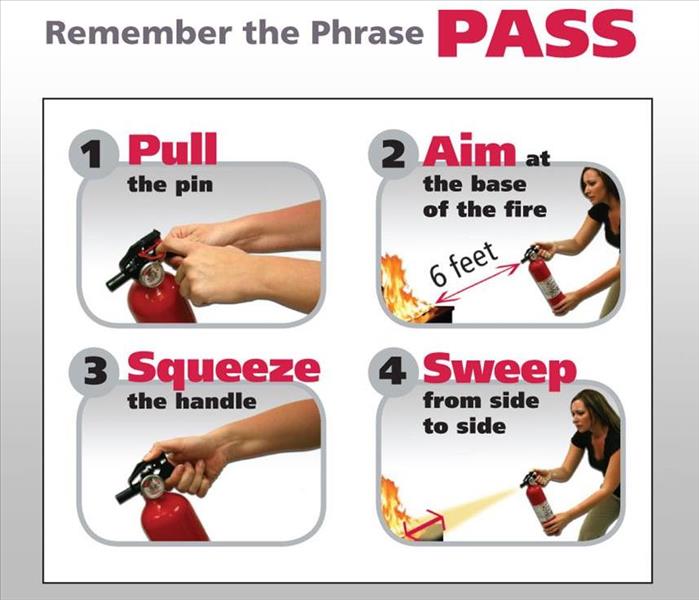Carbon Monoxide: A Silent Killer
7/24/2017 (Permalink)
You can't see or smell carbon monoxide, but at high levels, it can kill a person in minutes. Often called the silent killer, carbon monoxide, or CO, is an invisible, odorless, colorless gas, created when fuels, like gasoline, wood, coal, natural gas and propane burn incompletely.
According to the Center for Disease Control and Prevention (CDC), each year more than 400 Americans die from unintentional CO poisoning. It is estimated another 20,000 visit the emergency room, and more than 4,000 are hospitalized due to CO poisoning. All people and animals are at risk for CO poisoning, with some groups - including unborn babies, infants, and people with chronic heart disease, anemia, or respiratory problems - being more susceptible to the effects of carbon monoxide.
An excess of CO, leading to CO poisoning, can result from faulty furnaces or other heating appliances, portable generators, water heaters, clothes dryers, or idling cars left running in garages.
Taking some basic, precautionary steps can help eliminate the risk of carbon monoxide poisoning. Protect yourself by reviewing the following tips, provided by the United States Fire Administration.
- Have fuel-burning appliances, like oil and gas furnaces, gas or kerosene heaters, fire places and wood stoves inspected by a trained professional every year.
- open the damper for proper ventilation before using a fireplace. Never use your oven or stovetop to heat your home.
- Make sure all fuel-burning vented equipment is vented to the outside to avoid CO poisoning. Keep the venting for exhaust clear and unblocked.
- If you need to warm a vehicle, remove it from the garage immediately after starting it. Never run a vehicle or other fueled engine or motor indoors, even it garage doors are open. Make sure the exhaust pipe of a running vehicle is not blocked with snow, ice , or other materials.
- Make sure vents for the dryer, furnace, stove, and fireplace are clear of snow and other debris.
- Only use barbecue grills outside, away from all doors, windows, vents, and other building openings. Some grills can produce CO gas. Never use grills inside the home or the garage, even if the doors are open.
- Use portable generators outdoors in well-ventilated areas away from all doors, windows, vents and other building openings to prevent exhaust fumes from entering the home.
Help out your Neighbor!
9/12/2016 (Permalink)
 Help us get you the Good Neighbor Award, call us, 214-522-3000, and we can help you help your neighbor.
Help us get you the Good Neighbor Award, call us, 214-522-3000, and we can help you help your neighbor.
Wednesday September 28 is National Good Neighbor Day! Here is a quote I came upon:
"The duty of helping one’s self in the highest sense involves the helping of one’s neighbor."
-Samuel Smiles
SERVPRO is here to not just help you but your neighbor as well. If you see that your neighbor is growing some mold, mention us and we are here to help. If they recently had smoke or fire damage, we are here to help. If you think they are too stubborn to find someone to help them clean their carpet, just give us a call! SERVPRO is here to help you help your neighbor. So on this day of September the 28th of 2016, be a good neighbor and help the neighbor by calling SERVPRO of Park Cities/North Garland at 214-522-3000 or visit our website at SERVPRO.
Labor Day is Coming: Are you prepared?
9/1/2016 (Permalink)
 These are some general instruction on how to use an extinguisher in case of a fire and this is applicable for all extinguishers.
These are some general instruction on how to use an extinguisher in case of a fire and this is applicable for all extinguishers.
Did you know there is more than one type of fire extinguisher? There are four types of extinguishers and they are:
- Water Fire Extinguishers: This is the most widely used fire extinguisher and it is used for Class A fires, or for solids such as paper, wood, plastic, etc.
- Foam Fire Extinguishers: This is a more versatile type of extinguisher and used for Class A and Class B (liquid fires such as paraffin, petrol, oil, etc.).
- Dry Powder Fire Extinguishers: Often known as the multi-purpose extinguisher and can be used for Class A, B, and C (flammable gasses such as propane, butane, methane etc.).
- CO2 Fire Extinguishers: Carbon Dioxide is ideal for fires involving electrical apparatus, but will also be helpful for Class B fires.
With only 4 days until one of the most waited holidays of the year, Labor Day is a day everyone should be prepared for. And I don’t mean prepared with food and drinks, even though we all will, but I mean prepared with a fire extinguisher in the kitchen and where the grill master is located. Cooking is the number one leading cause of fires in residential and nonresidential areas in the United States. Most of these are because of loss of time and not paying attention to the stove, oven or grill.
Labor Day is about having fun, not about cancelling plans because of a fire. During this holiday, and always, have a fire extinguisher close by for the just-in-case moments.
Have a Safe Labor Day!






 24/7 Emergency Service
24/7 Emergency Service

